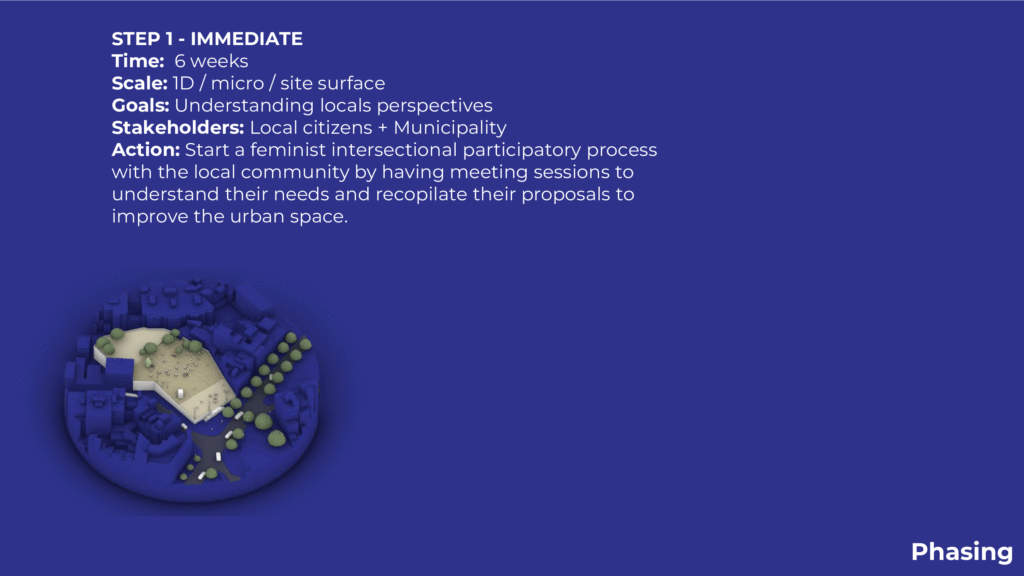Care Hub is a vibrant, community care-focused green space located in La Placeta de l’Avi Porta. This Hub combines nature, play, culture, and community activities into a unique urban oasis designed to bring people together and celebrate biodiversity, at the same time we promote the concept of a space of care through design.

La Plaçeta de l’Avi Porta is considered as part of one of Santa Coloma’s Green Fingers, a result of the implementation of the Pinta Verde Plan, a metropolitan project that looks to improve the network of public spaces in the city.
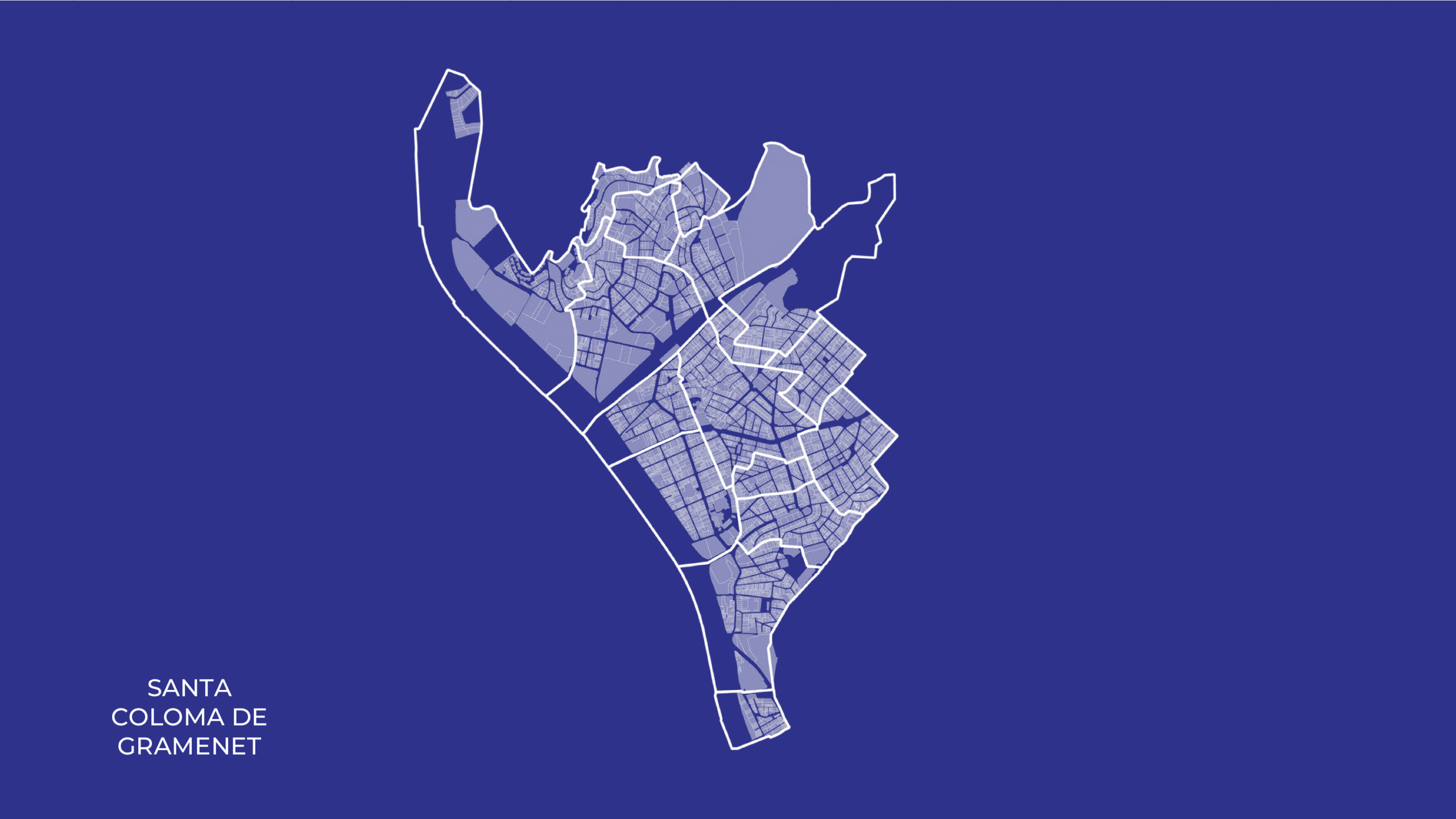
Location
The Care Hub is placed in La Plaçeta de l’Avi Porta, which is located in Spain, inside the region of Catalunya, in the south of the municipality of Santa Coloma de Gramenet.

La Plaçeta de l’Avi Porta is a 1937 square meters public space located on the streets “Carrer de la Circumval·lació” and “Carrer Sant Jordi”, at the border with Badalona. Geographic coordinates of the site situate the park in the north east hemisphere.
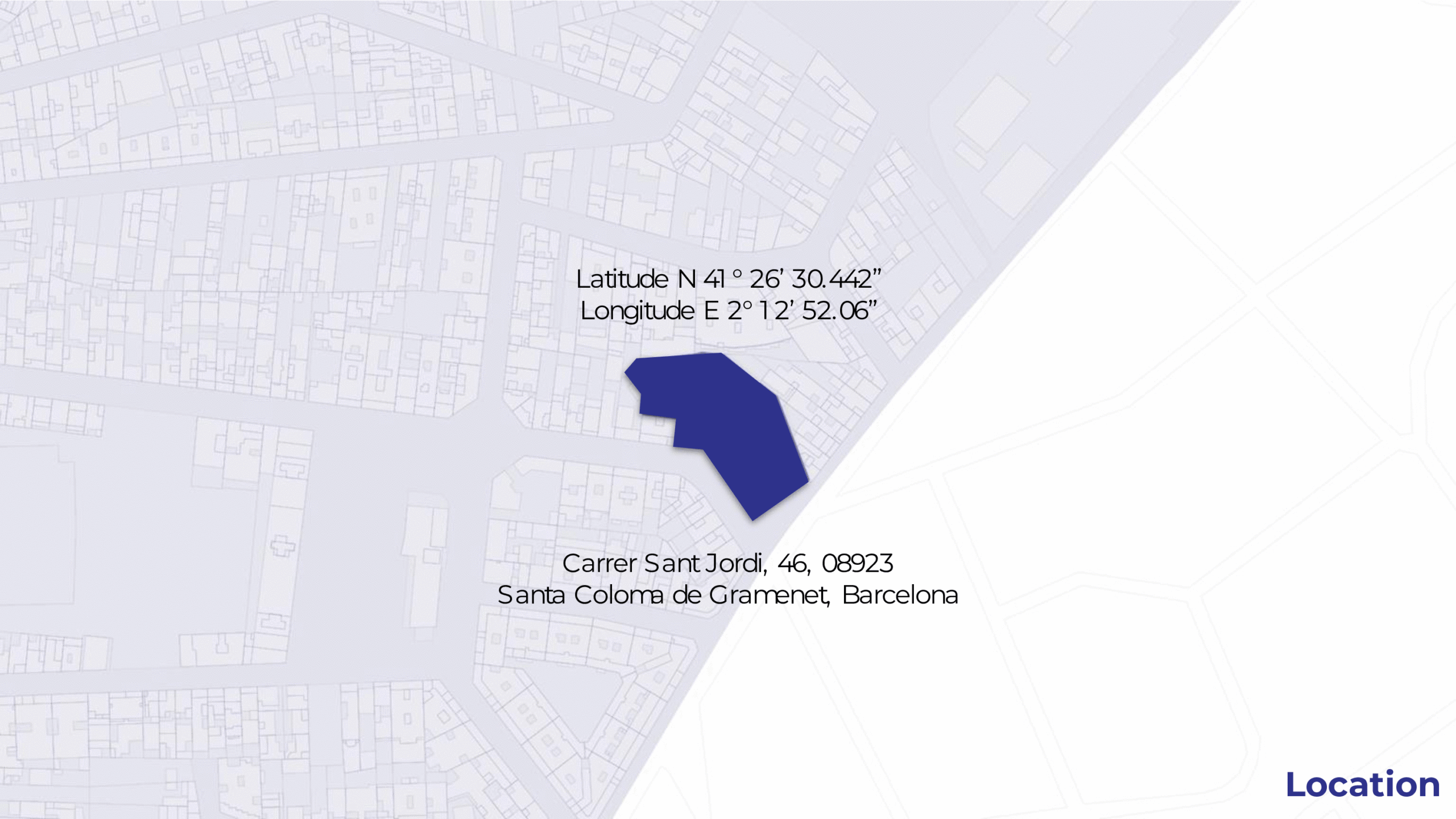
Demographics
La Plaçeta is inside the censal section 0824505013, one of the most high density sections of the municipality. Here, the difference in population percentage between genders is equivalent, meanwhile we have a 20% of children (0 to 19 years old), 30% of young adults (20 to 39 years old), 30% of adults (40 to 59 years old) and 20% of elderly (60+ years).
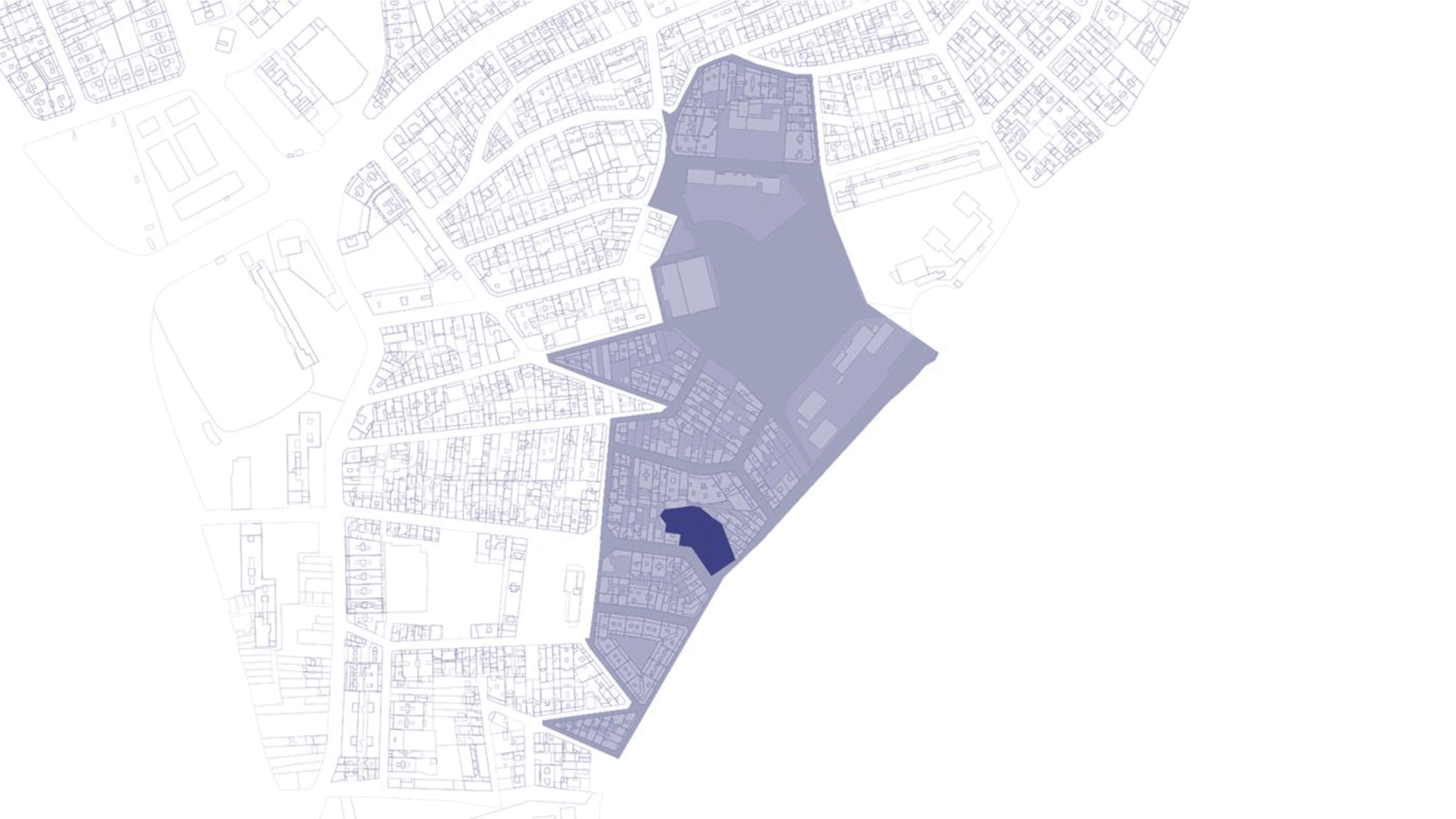
Historical Context
Originally was a softscape in the 1980s, then a parking lot in the 1990s and later it was transformed by the Generalitat de Catalunya’s Department of Territory into a green public zone with a playground and underground parking. Although it initially had a good level of vegetation, the greenery tarnished over the years, leaving much of the land mostly barren. This decline in vegetation negatively impacted the public space by reducing its aesthetic appeal and recreational value, creating a less inviting environment for residents. The redesign created a concourse-level area with a mix of concrete areas and softscape, and the staircase leading to the site adds an introverted feel lowering the experiential value of the space.
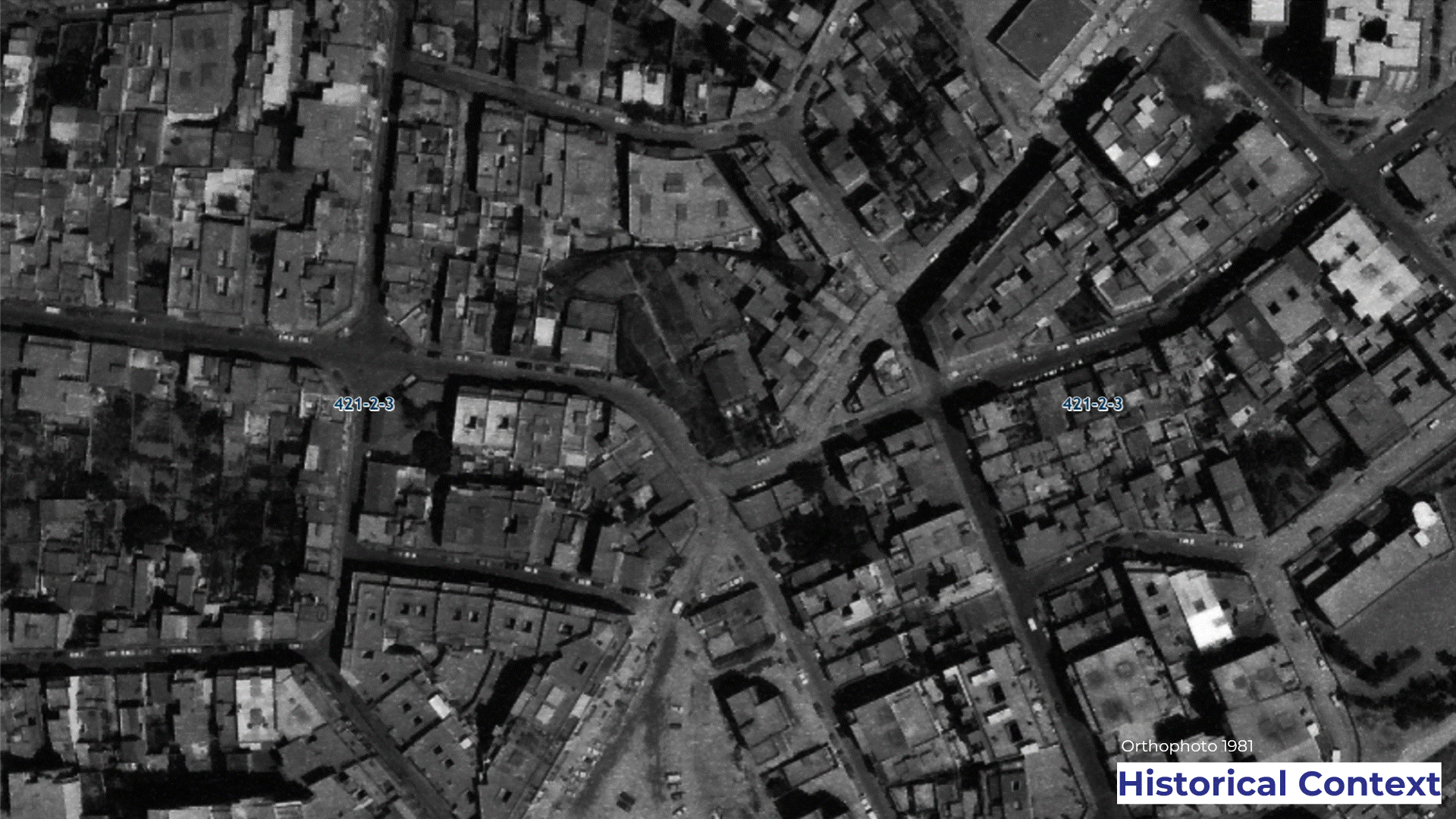
.
Current Situation
The park is located in a height of 60.6 meters above sea level, and has a difference in topography of 1.5 meters. It has 6 benches, 4 trash cans, 14 lightnings and 9 trees inside the perimeter and 3 outside in the sidewalk. The diagnosis indicates that the park conditions are unattractive for people, because it does not invite people to stay in the place. Most of the park surface is concrete, followed by soil and finally two small green areas with grass.
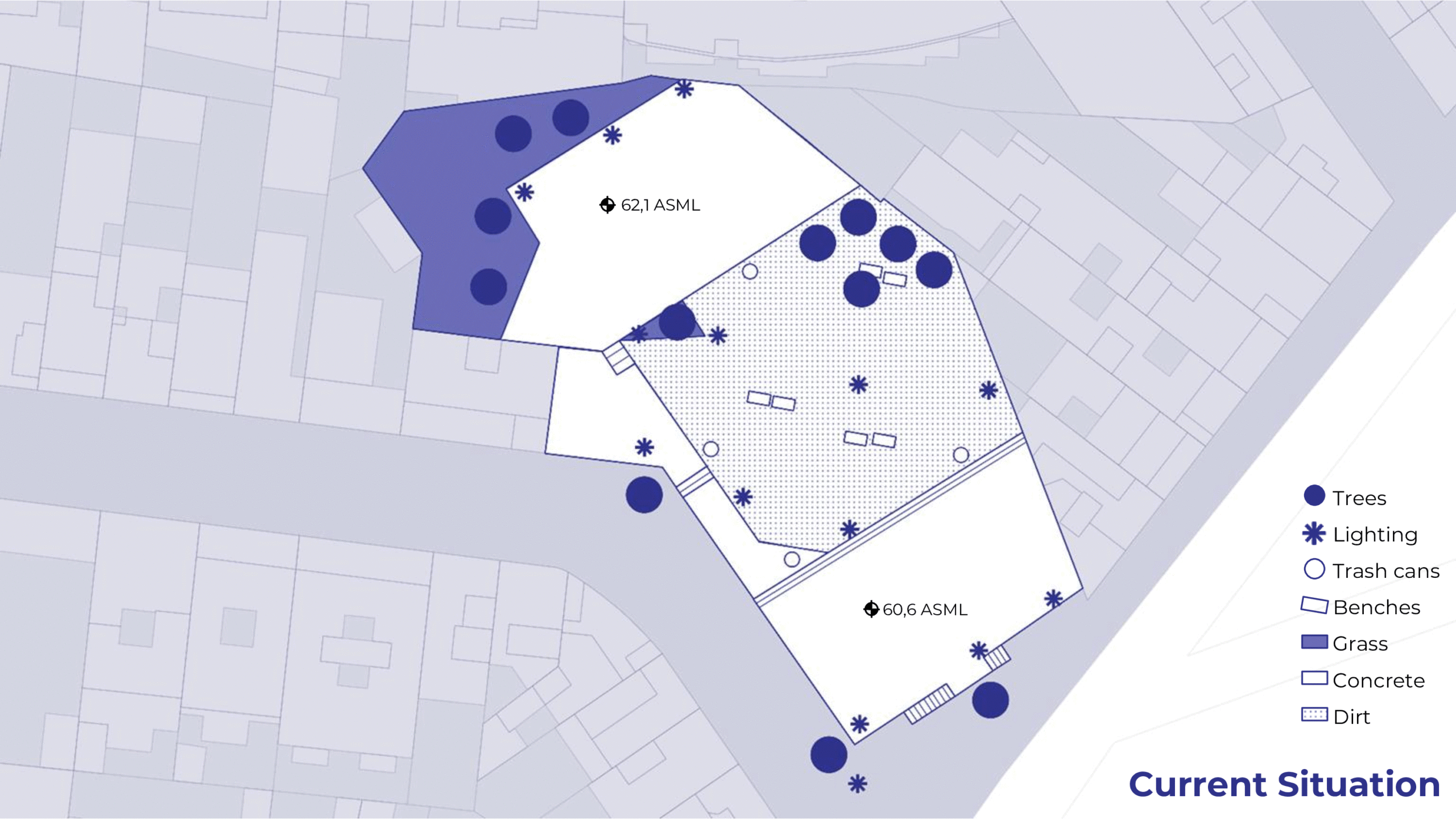
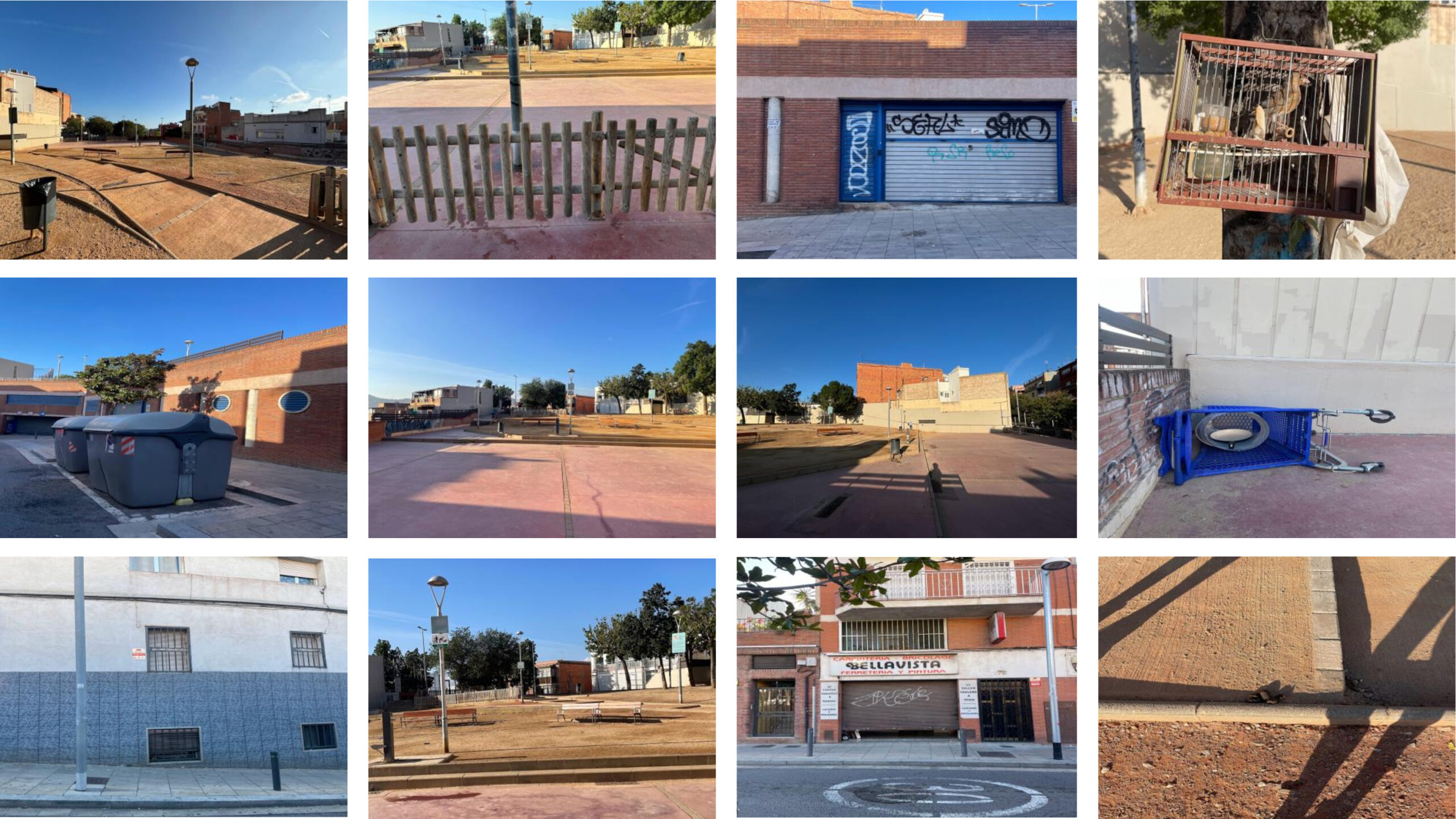
Because of the topography, the park is not accessible for people with reduced mobility due to the presence of multiple stairs to access and move around the place. Also, due to the absence of trees, there is no green cover that provides the benches with shadow, causing that nobody wants to sit or stay, mostly in the summer, when the outside environment gets hot and muggy.
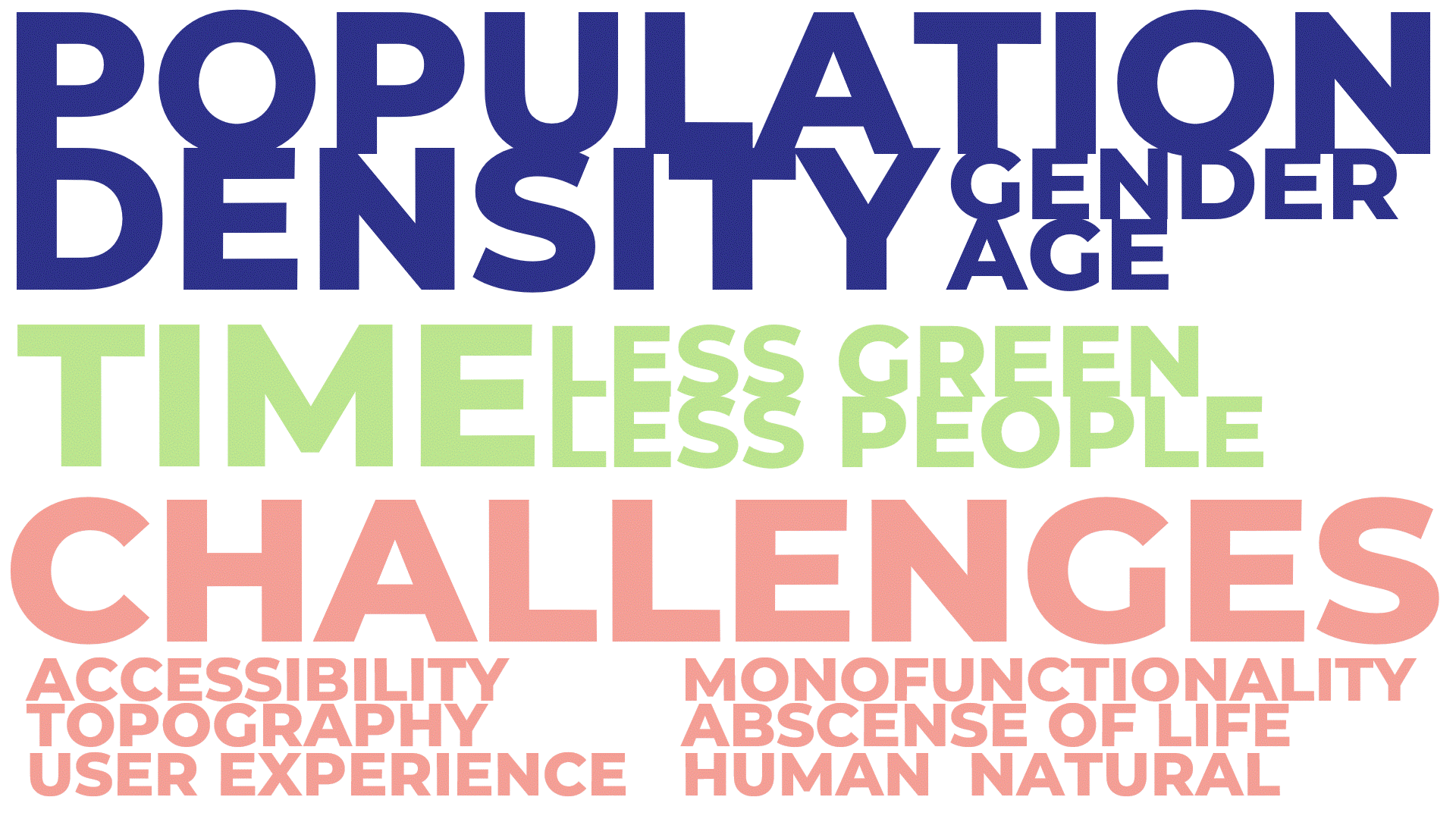
Agents & Santa Coloma Care Hub
Four interviews were made when we did the site visit. Since there was limited time to do the research, we decided to create our own personas based on the profiles we found and the vulnerable groups in society who were not represented in the people we interviewed. In that sense we created six different diverse profiles and elaborated an intersectionality circle with each of them. Additionally we created a list of all the different needs we perceived and imagined to then translate them into tangible architecture for the park´s proposal. It is important to say that the diagram of the needs is just a representation of how complex it can look like, and since we have our own biases the needs list is for sure way more complex and extended.
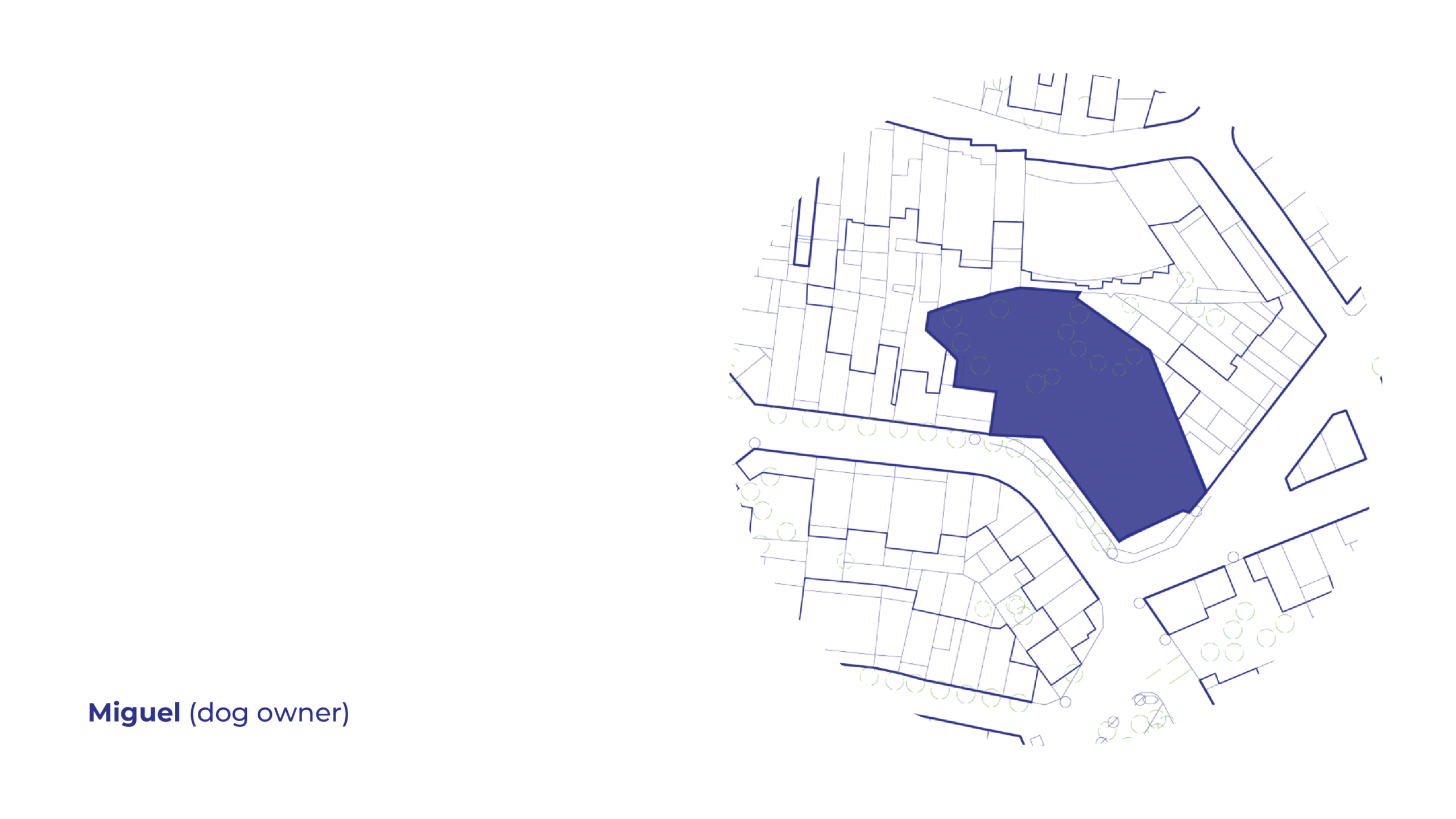
Concept
The essence, which we think should be the norm in any public space, is for it to be designed from a culture of care. Nowadays, cities are designed and based in a male, capitalist and extractivist culture, and we think that through this lens, the park and public space could become a more sensible, welcoming and diverse place for different agents, human and more than human to interact.
A Caring space is based on how agents can be taken care of; through 24/7 light for example, that takes care of the environment; having a space for more than human agents and it is design in a regenerative way, that allows you to take care of others; through certain mobiliary like enough space for someone to care for a dependant person, and that allows you to take care of yourself; like having the bus stop that connects better the city in a sense you spend less time moving from one place to another and you get to go for a walk and get fresh air. These are just some examples of how this concepts could look like, but the applications go beyond.
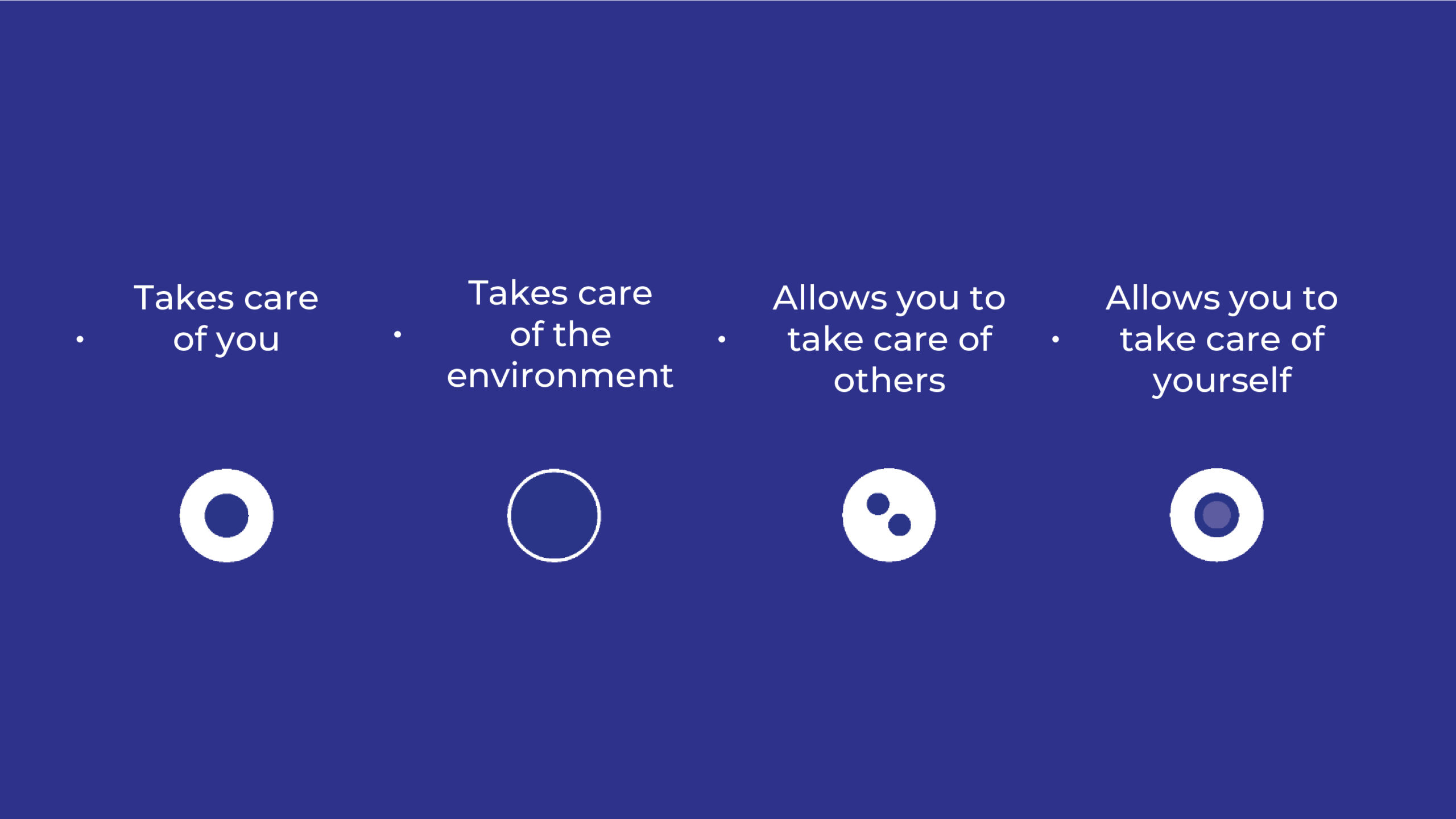
Although Care Hub is a small to medium-scale project, it operates on multiple dimensions. This complexity of impact—at the site, neighborhood, and city levels—enables a comprehensive approach to delivering care through interconnected means.
Site Impact:
The project involves direct interventions in the park’s landscape, fostering spaces for meaningful interactions among users.
Neighborhood Impact:
Care Hub recognizes the urban connections to existing public spaces along the same street, enhancing the continuity of the public realm. Additionally, the community center component aims to serve as a local cultural and social beacon.
City Impact:
The project primarily influences mobility solutions by introducing a new bus line that connects the riverbank to the hillside, addressing the needs of the local community. This improvement activates numerous public spaces along the green finger that were previously inaccessible to many users due to the hilly terrain.
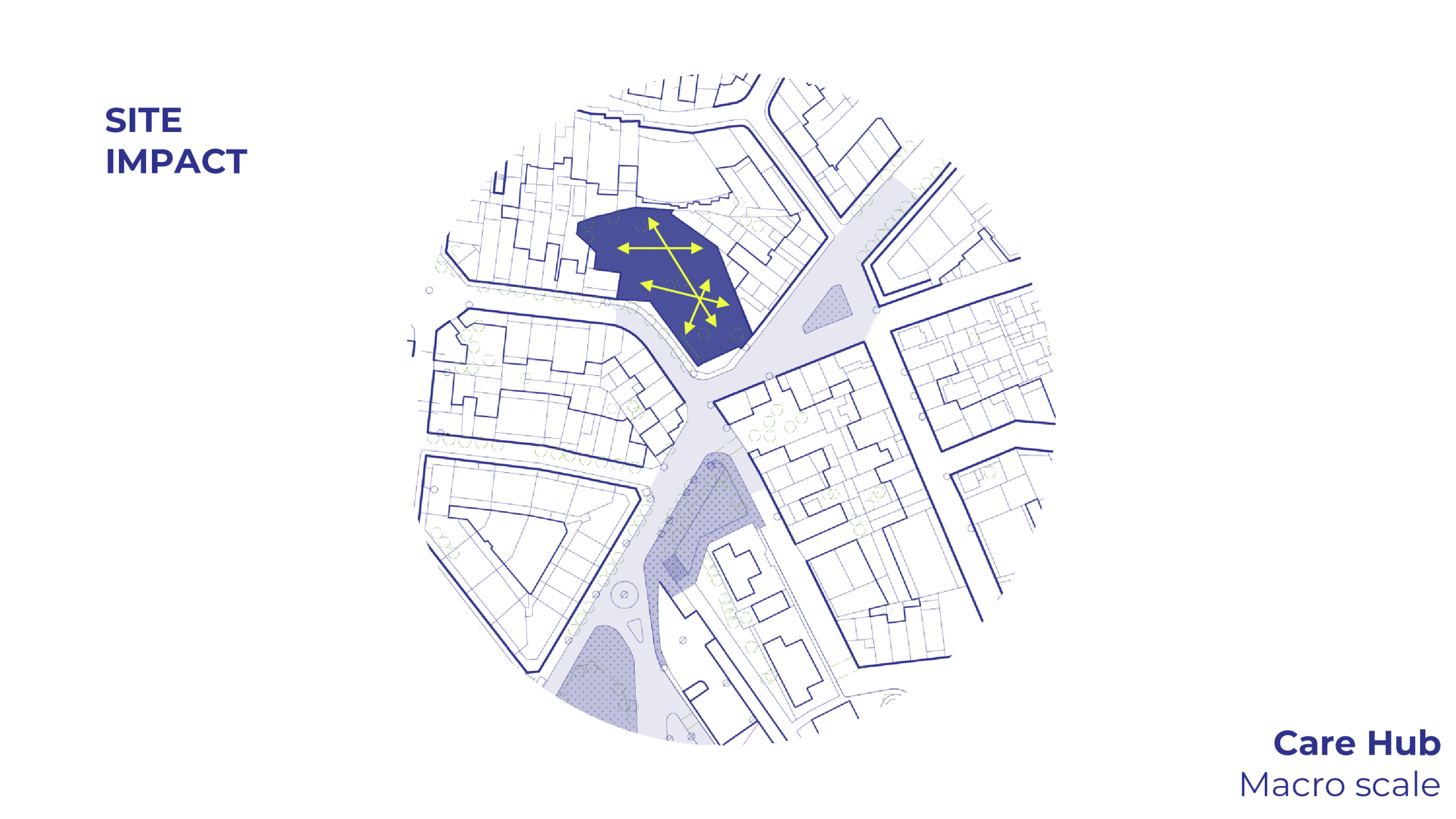
Zoning
Following the design-to-care concept, the zoning of the Care Hub aligns with various aspects of care. The Care Hub consists of two layers: the upper layer is a MULTI-SPECIES PARK, while the underground level, currently used as a parking facility, will gradually be transformed into a COMMUNITY HUB through a participatory and prototyping process.
Environmental Care: The first zone of the park, the BIODIVERSE GARDEN, promotes environmental stewardship. This green space, inspired by remnants of the former park, features a fenced dog park, beehives, a bird feeding station, and a vertical garden. It also includes an educational path and wayfinding elements that enable users to learn about local flora and fauna, as well as tips for dog training. Biodiverse park is also a partly self sustaining system, where dog’s poo can be composted and use to fertilize vertical garden and the flora.
Self-Care: The second zone, A LIFELONG PLAYGROUND, addresses the theme of personal well-being. This is not just a conventional playground; it is a creative space designed for children, adults, and seniors, where sports and recreation intersect. This area allows families to engage in active play together. While children explore the playground or climb the climbing wall, elders can use specially designed equipment that promotes lifelong mobility.
Community Care: Near the park’s edge, which offers a spectacular viewpoint of the Santa Coloma riverbank, lies the COMMON SPACES zone. This area encourages users to take care of the others by providing spaces for interaction and gathering under the shade. It is easily accessible for bikers and strollers. Positioned adjacent to the street, this zone is designed for flexibility, making it suitable for hosting social events like outdoor movie nights, community dinners, and flea markets. The park will feature a redesigned entrance, removing the fence (except for the dog park for safety) and replacing stairs with an accessible ramp.
Amenities: Two new pavilions enhance the zoning plan: a SERVICE POINT (with restrooms, cleaning deposits, dog waste disposal, and trash bins) and an INFO POINT (providing wayfinding, an elevator, and stairs to the community hub).
A new BUS STOP, located at the intersection of the MULTI-SPECIES PARK and the street, will feature seating for seniors and regular users, as well as bike parking.
At the base of the multi-species park lies the COMMUNITY HUB. Currently occupied by a car parking facility, this space is set for gradual transformation into a collaborative, flexible area that aims to become a local beacon for social integration, participatory processes, and prototyping.
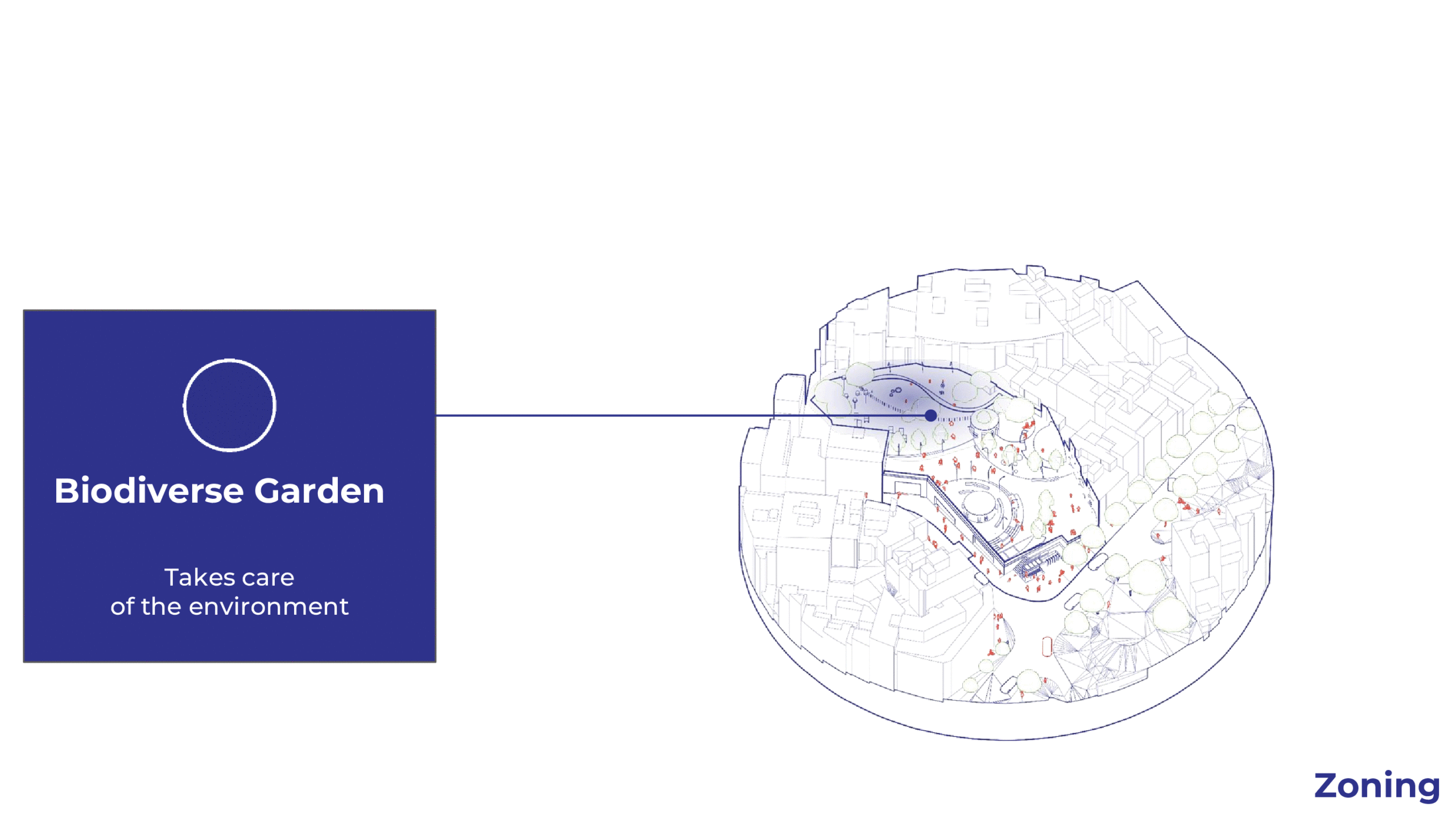
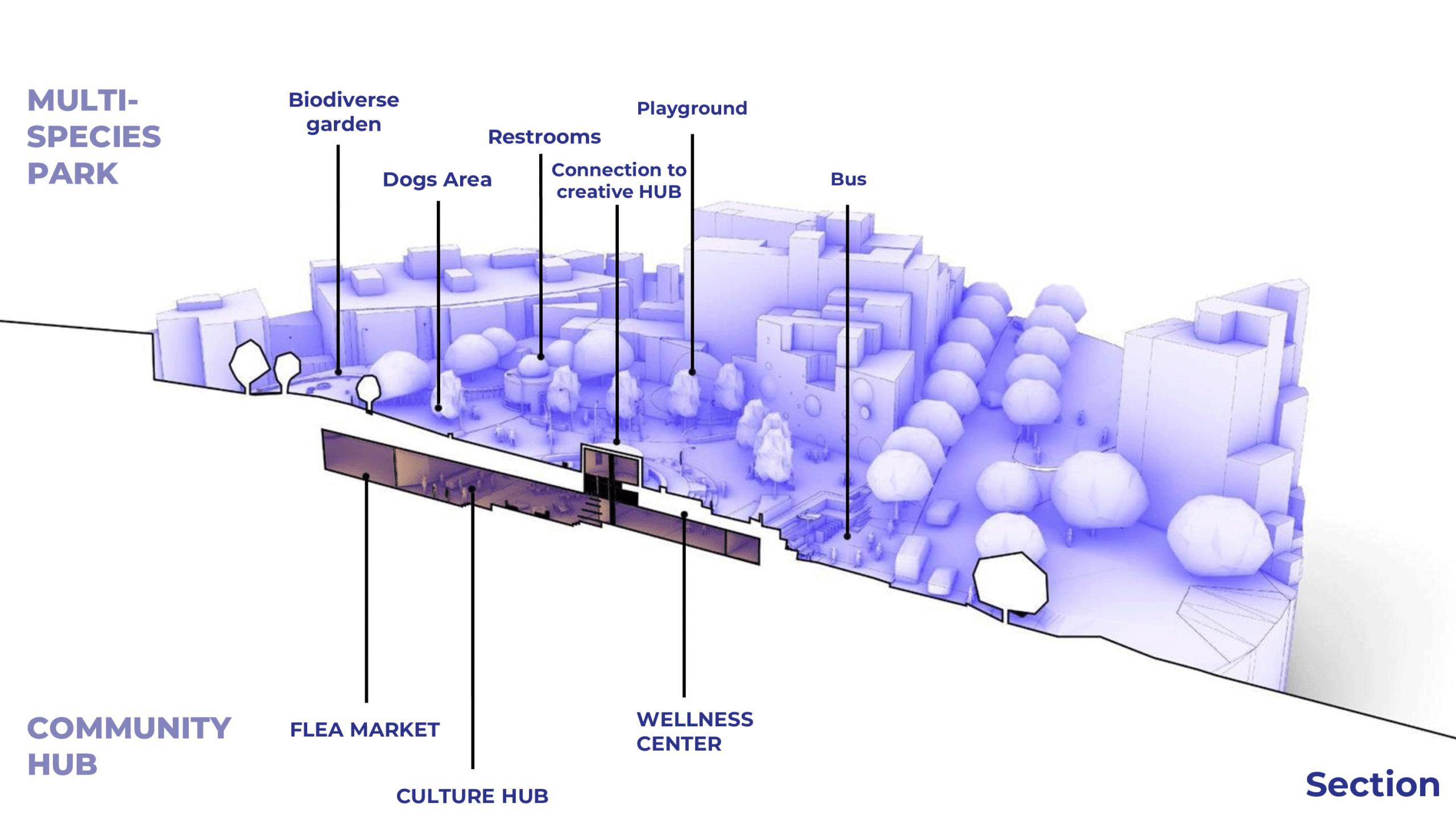
In these sections, as we observe, the urban and human intersect with the biodiverse and more than human through the park. We would like to see the Care Hub as a bridge to close the gap between these two separated landscapes to create a mixed one. A multispecies one.
In the lower level of the park is The Creative Hub, a space for the locals to host community events, put on a grocery store or a flea market if they like, or even to have a wellness center. There is enough room to have different spaces and to store furniture to make the place flexible for different events or activities.
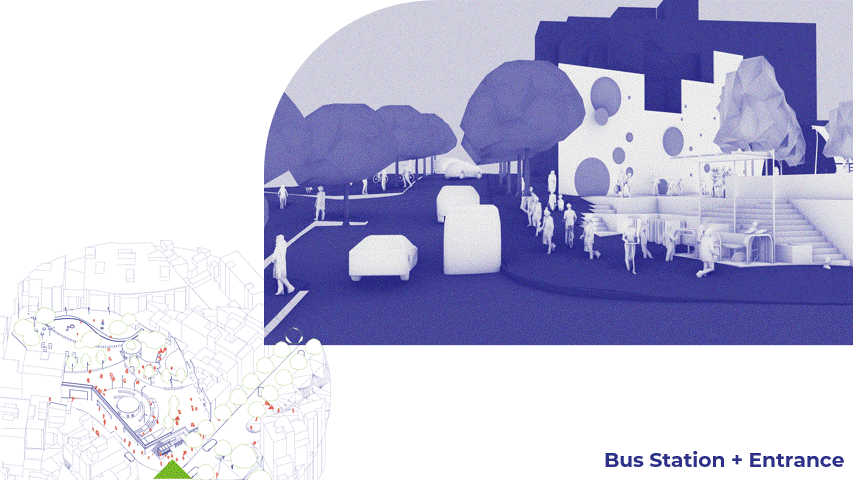
Before & After
In these views we can observe the transition from the current landscape into the intervened one.
The first one is the common space, and is all about flexibility and open space. We noticed kids used to play soccer there before it was converted to a dog park, so the goal is to let people re-own the place as they wish to use it now, or maybe how they used to use it before. As well this allows for a multifunctional place which creates space for initiatives of different activities to be held throughout all day. Also this allows visibility to what happens inside, letting the space and others to take care of you.
The second view is the biodiverse garden, where as mentioned before, is the place inspired in the former greener area. Even though more than human is thought to be spread out throughout the park, this zone would be the main space for those agents. And as you can see multiple species like bugs and birds could be found easily and through signaling we could all learn about how they take care of the environment and us and we can learn how to take care of them as well.
Last but not least, we can see the dog park, where a coexistence of humans and more than humans, especially dogs, can take place. This space has furniture for us humans and our diversity, as well as for dogs and their recreational needs, not only physiological needs like urinating and defecating. We believe that dogs do need to have a fenced area for them and us to feel/be safe, but there are different ways of how it can look like. We would be betting for a greener area where also their pee and poo doesn’t smell like it smells now with the dirt surface.
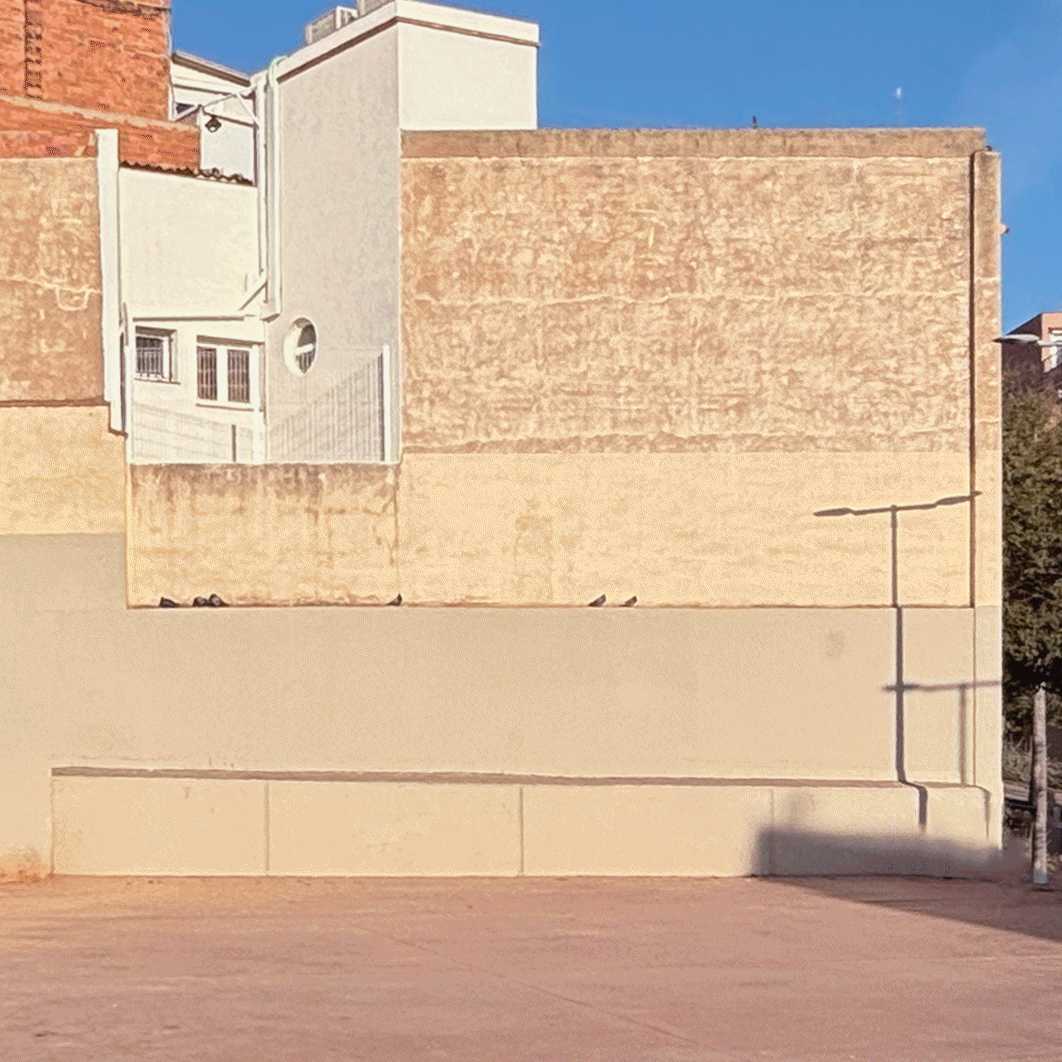
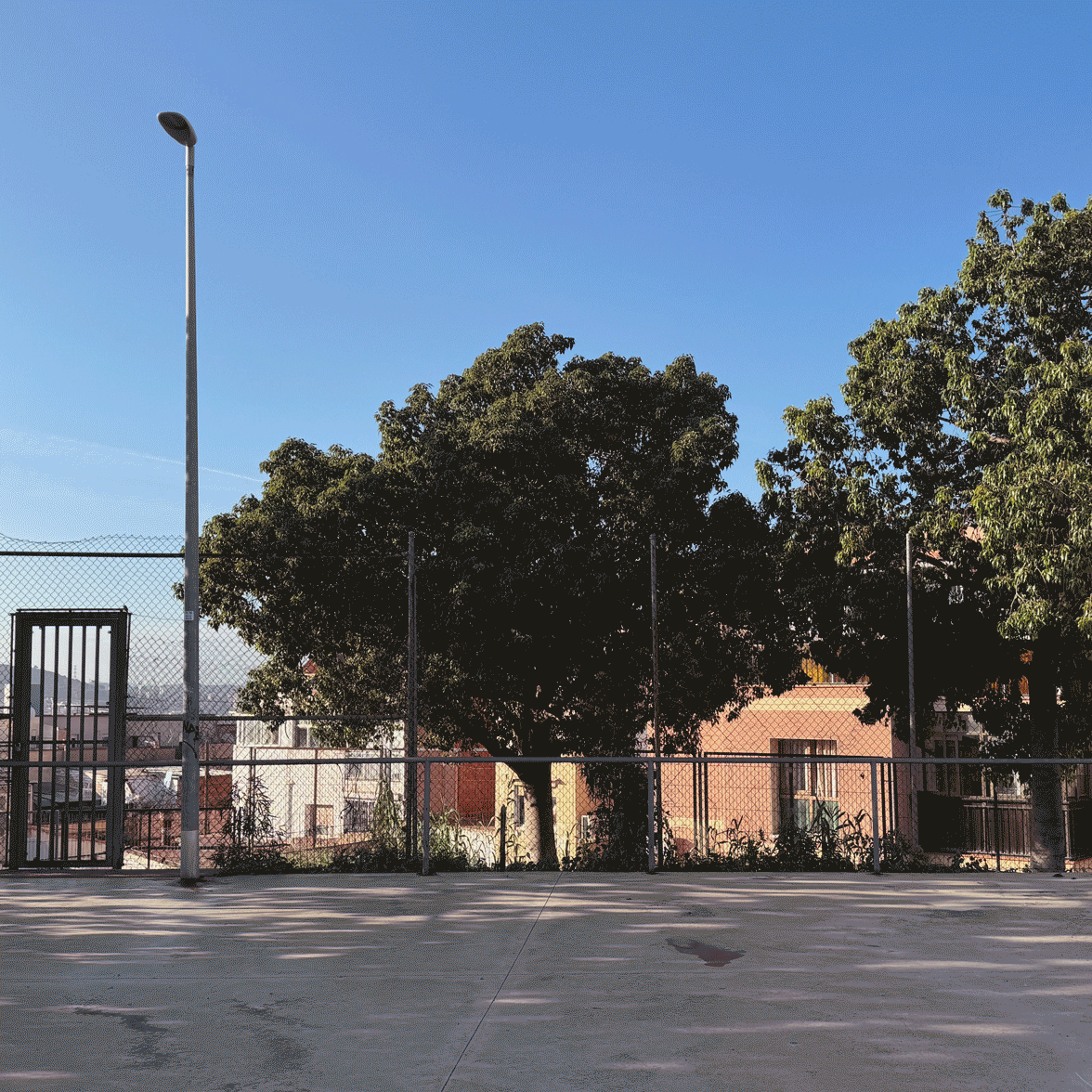
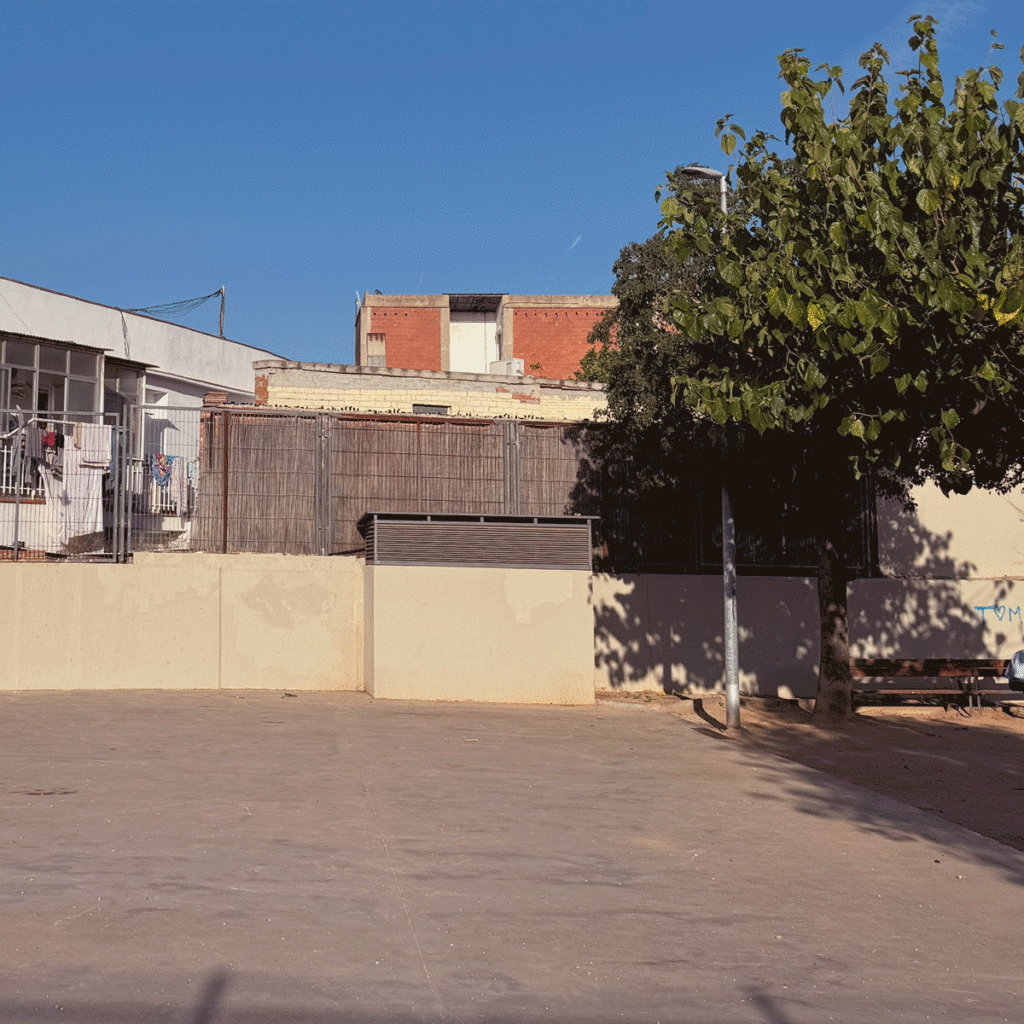
Implementation
In order to implement this project in the community, we propose a three phase methodology.
Phase 1: Immediate
The first phase, set to take around six weeks, will focus on understanding local perspectives. The goal of this step willl be to build a strong foundation by engaging with the community through a participatory, feminist, intersectional process. Local residents and the municipality will come together in meetings to share their insights, needs, and suggest improvements. This step will ensure the voices of the people who use the park most are heard right from the start.
Phase 2: Midterm
Over the course of the next year, the project will move into the midterm phase, aiming to establish a sense of ownership among local residents. A neighborhood council will be created to act as a bridge between the community and the municipality, making the process transparent and collaborative. Concrete improvements such as adding benches, lighting, and signage, repainting surfaces, and transforming the parking area for social activities will also be included during this phase. This step will hopefully not only make the park more usable but also create a stronger community bond.
Phase 3: Goal
The final phase, planned to take place over the course of three years, will be where the park truly becomes a landmark of Santa Coloma. Major changes will take place during this phase. For instance, the reconstruction of the park’s entrance and the creation of defined zones within the park,will be implemented. The repurposing of the lower-level parking area into an innovation hub will also help the park and its surrounding area. Duriing this time, regular neighborhood meetings will keep residents involved. Additional improvements like safer pedestrian crossings, connections to other public spaces, and a new bus route will help establish the park as a central part of the community and its identity.
The goal with this gradual rollout is to ensure that the park is built for the community, by the community. This approach will give the park the best odds of succeeding in the long-term and truly become the community hub that it has the potential to be.
